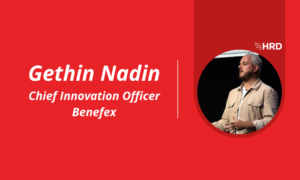Reward & recognition: the challenges and why it’s worth overcoming them
- 4 Min Read
Reward and recognition is one of the most powerful tools that we as business leaders have to encourage the behaviours and values that we want to see in our organisation. Reviewing and formalising the way that we thank staff for their contribution and recognise hard work is an important step in securing employee retention and business progression. Paul Devoy explains further.
- Author: Paul Devoy
- Date published: Nov 27, 2018
- Categories

 Traditional reward and recognition schemes tend to focus on financial incentives, based on accepted wisdom that employees are most likely to respond to financial stimuli.
Traditional reward and recognition schemes tend to focus on financial incentives, based on accepted wisdom that employees are most likely to respond to financial stimuli.
However, a recent survey by online employee motivation platform Perkbox, suggested that 32% of workers feel that the existing reward and recognition strategy at their office is poor, while a further 66% said that personalised benefits would go a long way in making them feel more appreciated at work.
This idea of personalising reward and recognition is a far more convincing strategy than simply throwing money at good performance. Not only can this feel arbitrary, it also doesn’t show that you have gone beyond the business wallet mentality to think of a personal way to thank your people.
Laszlo Bok, former Senior Vice President of People Operation at Google was one of the first proponents of this revisionist approach to employee incentives. He developed an online tool called gThanks where employees could give each other positive feedback which would then be displayed on a physical board for all to see.
There is hard evidence to support the idea that genuine appreciation as a tool in employee motivation is as effective as money. Research suggests that 90% of employees who received a sincere thank you from a manager in the last month would say that they trusted senior management in their organisation. This compared to a 48% level of trust felt by people who had received no thanks.
What do employees want?
Rather than focussing on how much your organisation can commit to financially rewarding employees, your time would be much better spent in speaking to your people and understanding what sort of recognition they would most like to receive when outperforming against company values. Do they want a public thank- you? Perhaps the choice of an experience day? Or maybe an evening out with their team.
Once an organisation has established what their employees want and how this can be translated into a meaningful strategy, leaders should then bring the following into consideration:
Coherence- This means that it must match up to your values as on organisation so that the rewards can reinforce the positive behaviours that reflect the values that you want to establish as the foundation of work culture. You must plan which behaviours (such as supporting a colleague or delivering work ahead of schedule) are most important to your success as a business and focus your strategy around these.
Communication– The importance here is two-fold; firstly, you need to ensure that people managers are empowered to deliver the strategy effectively to their teams. Secondly, if everyone is on the same page about what should and shouldn’t constitute as reward-worthy behaviour, there will be no internal conflicts over some teams being rewarded more/ less frequently than others. Hence, if the strategy is communicated effectively, it can also be delivered effectively.
Consistency– As stated above, reward and recognition practice must be delivered consistently across your organisation. Once the communication plan has been delivered, it is up to individual line managers to evolve a manner of implementing the policy that works for their people. However, at the core of this work must be the understanding that it is the rewarding of values-based behaviour that is important. This focus will keep the strategy consistent.
Investors in People
Internally, our approach to reward and recognition aligns heavily with our values. We want our people to work collaboratively, be empowered, driven and ambitious.
As mentioned in my previous blog, we partnered with Clear Review to provide employees and managers with a platform where they could recognise the performance of their colleagues and give thanks for a job well done. Employees also have the option of adding a £25 reward to their thanks. We believe that this empowers our people to celebrate their colleagues living the organisation’s values when driving forward our mission.
Is it right for you?
After mulling over the above, you might be wondering why you should bother with a reward scheme for your people; you pay them a salary to deliver their best, isn’t this enough?
The short answer is: no. Every week at work we ask our employees to go above and beyond in countless different ways. It may not be a direct request that they work late or skip their lunch break, but sometimes this is a consequence of work load and time management.
Rewarding and recognising hard working staff by showing your gratitude is an integral cog in the mechanism of staff motivation.
For more help in understanding how reward and recognition could make a difference to your business performance, visit the Investors in People website: https://www.investorsinpeople.com/









